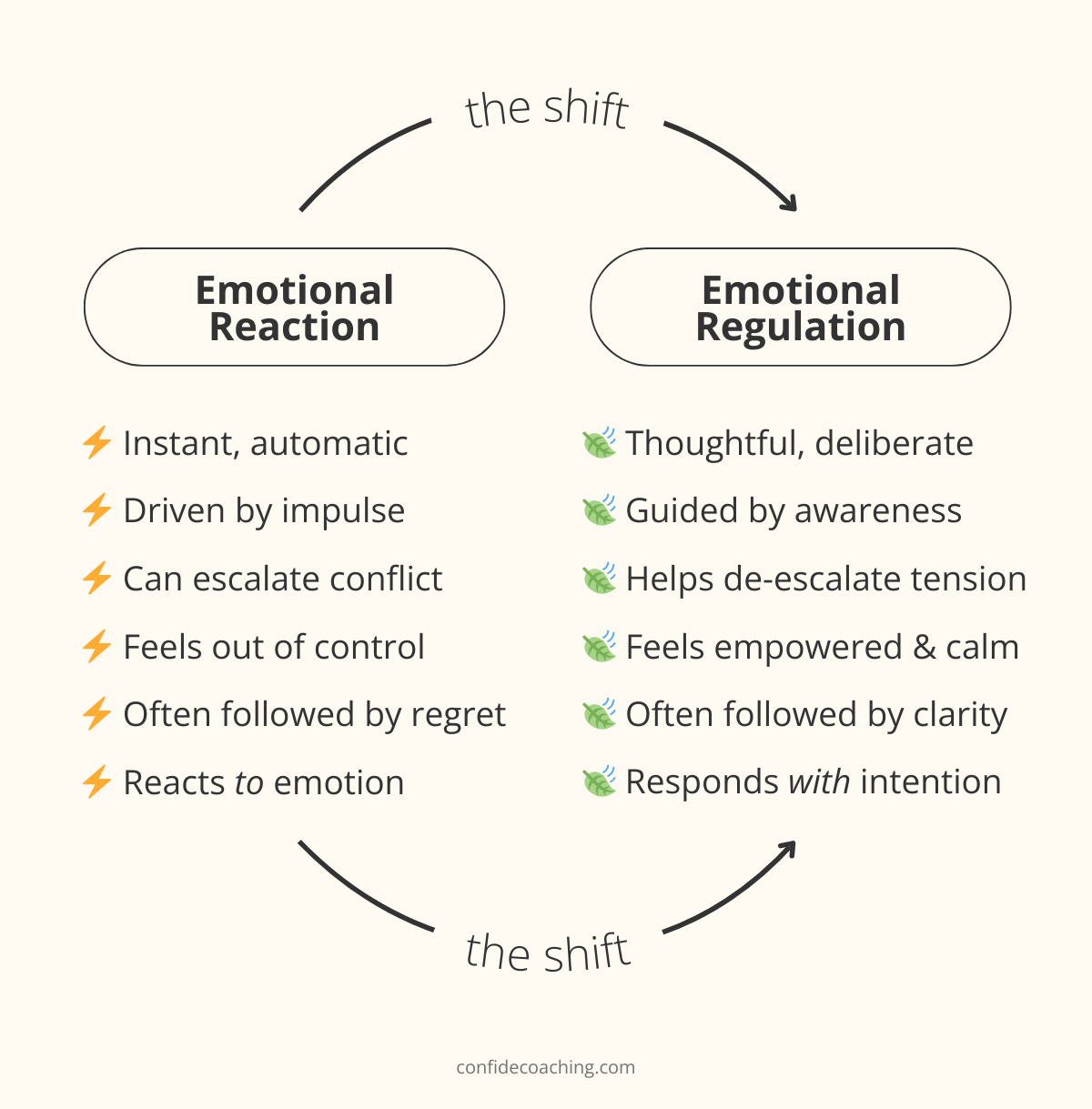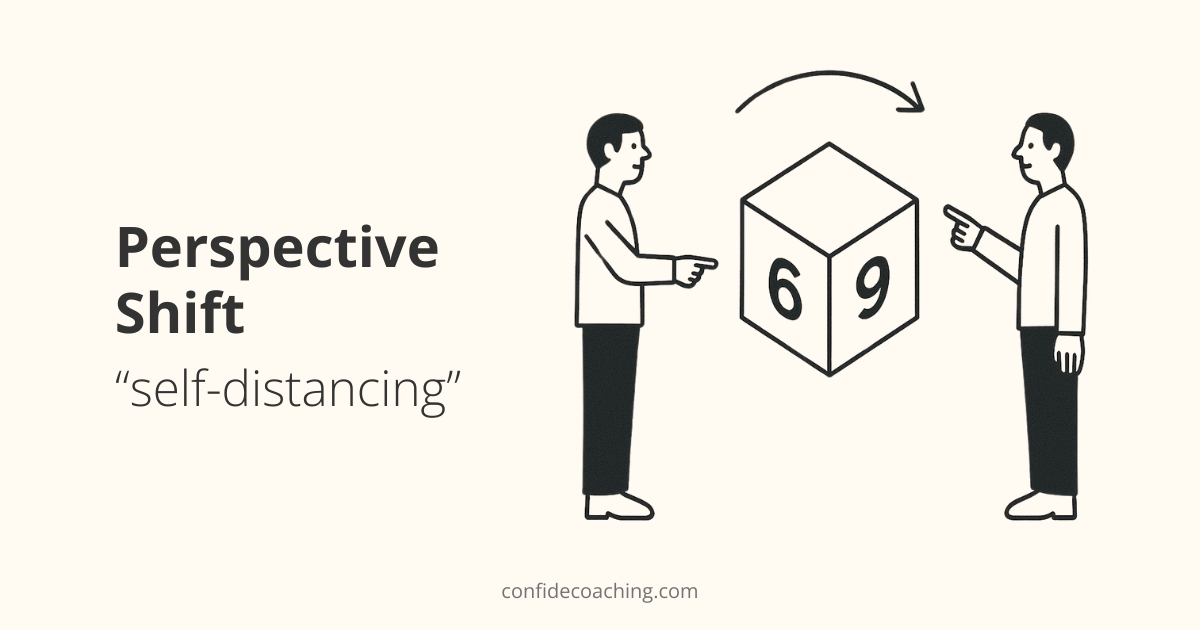This isn’t a book summary. It’s your emotional self-regulation field guide—based on neuroscience, distilled through experience, and ready to use when life gets messy.

Shift Isn’t About Perfection. It’s About Power.
You’re not broken because you get triggered. You’re human.
But staying triggered? That’s optional.
Every day, we navigate small emotional earthquakes. The email that sends your stomach into knots. The offhand comment that echoes in your head for hours. The rising pressure when life demands more than you have to give.
You can’t prevent emotions from arising. But you can learn how to shift them—intelligently, compassionately, and consistently.
In Shift, psychologist Ethan Kross invites us to rethink what emotional control really means. Add in insights from neuroscientist Andrew Huberman, and you have something powerful: a framework to understand what emotions are trying to tell you and the tools to shift from spiraling to grounded.
This isn’t a book recap. It’s a toolkit. A step-by-step guide to help you build your own emotional reset system with practical emotional regulation strategies.
Let’s dive in.
Part 1: The Premise – Emotions Aren’t the Problem
We’ve been taught to fear our emotions. To hide them, override them, or apologize for them. But what if emotions weren’t a threat to our stability, but a bridge to deeper understanding?
Kross poses a central question: Can we really control our emotions? The answer isn’t a hard yes or no—it’s a shift in perspective. Emotional control isn’t about force. It’s about flexibility. You don’t control emotions by clamping down. You regulate them by learning how to work with them, not against them.
Shift Principle #1: Emotion is a message, not a mandate.
Think of emotions as internal messengers. Anger may signal a boundary violation. Anxiety might be your brain’s attempt to forecast uncertainty. Sadness can point to something meaningful that’s been lost. These signals deserve attention, not dismissal.
But here’s the trap: We often interpret emotions as commands—”I’m anxious, so I must avoid this.” “I’m angry, so I have to lash out.” That’s reactivity, not regulation.

The shift begins when we recognize that feeling something doesn’t mean we have to obey it. Naming the emotion and creating space around it gives you the power to choose your next move.
This is the foundation of emotional agility—the skill of moving with your emotions, not being moved by them. If you’ve ever asked yourself, “Why do I feel this way—and why can’t I snap out of it?” you’re not alone. What you need isn’t to suppress the feeling, but to understand and redirect it.
The good news? You already have the tools. Let’s start with the ones built into your body and mind.
Part 2: Shifting from the Inside Out – Tools Built into Your Body and Mind
In Shift Kross tells us that most emotional regulation tools are already built into our biology. Your nervous system, your breath, your focus—they’re all internal control panels you can learn to operate with more intention.
This section focuses on how to access those controls and shift your internal state, even when external chaos is loud.
Sensory Shifters: Regulate Through the Body
When your heart races, hands sweat, or your breath shortens—your body isn’t betraying you. It’s doing its job. But unless you intervene, those signals can snowball into full-blown overwhelm.
Sensory regulation techniques work because the body can signal safety faster than thoughts can form. This bypasses overthinking and drops you directly into the present.
Why it works: Your skin, lungs, and muscles are part of the emotional feedback loop. Change what your body feels, and your brain will often follow.
Try This:
- Run cold water over your wrists for 30 seconds. It stimulates the parasympathetic nervous system and can short-circuit rising panic.
- Hold an ice cube in your hand. It snaps your attention out of mental loops and into sensation.
- Step barefoot onto grass, textured tile, or stone. Grounding through contrast calms the nervous system.
Bonus Tip: Scent bypasses rational thinking and travels straight to the amygdala—your brain’s emotion center. Keep peppermint oil, eucalyptus, or citrus peel nearby as a portable reset anchor.
Sensory shifters are some of the fastest tools for nervous system regulation. You don’t need to feel ready to use them—you just need to start. Your body will take it from there.
Attention Shifters: Where Focus Goes, Emotion Follows
Here’s what few people realize: Emotions aren’t just about what’s happening—they’re also about what you’re paying attention to.
In times of stress, our focus narrows. We zoom in on the problem, and it begins to feel like the whole picture. We mentally rehearse worst-case scenarios, convincing ourselves they’re imminent.
Kross calls this narrowing “chatter.” Huberman’s research shows that widening your visual field can signal safety to the brain. It tells your system, “You’re not trapped. There’s more here.”
Try This:
- Step outside and scan the horizon. Let your gaze expand without focus.
- Ask: “What’s one thing I’m not seeing clearly right now?” Curiosity opens perspective.
- Use the 5-4-3-2-1 technique to anchor your attention in the sensory world: 5 things you see, 4 you can touch, 3 you hear, 2 you smell, 1 you taste.
You’re not trying to distract yourself—you’re interrupting the mental spiral. This is a form of cognitive re-centering. The broader your attention, the less tightly emotions grip you.
Perspective Shifters: Talk to Yourself Like Someone You Respect
Your inner dialogue shapes your emotional state more than the situation itself. If you talk to yourself like a failure, your nervous system believes it. If you speak like a guide, your brain starts to steady itself.
Kross introduces “self-distancing”—the practice of talking to yourself in third person. It might feel odd at first, but the psychological effects are real. It creates enough space to shift from threat to strategy.

Try This:
- Use third-person self-talk: “You’ve handled difficult things before. You can do this.”
- Address yourself by name: “[Your Name], you know what matters. Stay with that.”
- Imagine you’re coaching a friend through what you’re experiencing. What would you say to them?
Self-distancing reduces emotional intensity and activates the brain’s executive centers. It helps you step out of the emotional storm and into a position of wise action.
When your inner voice becomes a mentor instead of a menace, emotional regulation becomes much easier—and your confidence grows with every shift.
Part 3: Shifting from the Outside In – Rewriting the Environment That Shapes You
In Shift, Kross reminds us that emotional change doesn’t just come from inside—it often starts from the outside. Your surroundings, relationships, and cultural inputs are not neutral. They either reinforce your stress or help you regulate it. Shifting from the outside in means designing an environment that supports emotional clarity, not chaos.
Space Shifters: Change the Room to Change Your State
Our physical environment constantly signals our nervous system. Clutter may create urgency. Calm lighting and clear surfaces create ease. You don’t have to overhaul your space—just tweak it so it reflects how you want to feel.
Try This:
- Designate a “reset corner” in your home or workspace. Even one tidy chair with soft lighting can become a place to pause.
- Reduce visual noise in one high-traffic area. A clearer desk or countertop creates a more focused mind.
When your environment soothes instead of stimulates, your emotions have room to breathe.
Relationship Shifters: Choose Connection That Grounds You
We often forget that people are part of our regulatory system. We co-regulate with those around us. Some connections stabilize us; others accelerate stress. The emotional tone of your day often depends on who you share it with.
Try This:
- Identify two or three people who help you feel centered. These are your emotional anchors—reach for them when you need to come back to center.
- When things feel heavy, lead with your emotional state before your story. Say: “I feel overwhelmed. Can we sit with that together for a minute?”
Creating emotional safety in relationships makes it easier to access insight, reflection, and resilience.
Culture Shifters: Curate What Influences You
Cultural inputs—like social media, news, and even workplace norms—shape how you view yourself and the world. Kross calls these “culture shifters” because they mold emotional habits over time.
Try This:
- Audit your digital feed. Notice who leaves you feeling more anxious, less worthy, or constantly reactive. Mute or unfollow accordingly.
- Follow creators and voices who model emotional complexity, nuance, and personal growth—not just perfection or productivity.
Changing the culture you consume helps reshape the culture you create internally.
Together, these external and cultural shifts form an emotional ecosystem. You don’t have to force regulation from within when you’re supported from the outside. Rewire your environment, and you shift how you move through it.
Conclusion: The Real Shift Happens in the Doing
You’ve now seen how emotional shifts can come from the inside out—through your sensory, attentional, and perspective systems—and from the outside in, through your space, your relationships, and the culture you consume. These tools aren’t abstract theory. They’re real, practical levers you can reach for anytime life starts to spin faster than you’d like.
So how do you turn this into your own Emotional Reset Toolkit?
Start by choosing one shift from each category Kross outlines:
- One internal shift that you can use when you feel overwhelmed in the moment.
- One external shift that improves how your environment supports you.
- One cultural shift that helps you protect your mental landscape.
Write them down. Practice them. Personalize them.
And when you’re ready, add more—like the ten bonus tools listed here:
1. Micro-Intentions
Before you start a task, enter a room, or respond to a message, pause and ask yourself: “How do I want to show up for this?” This small, intentional check-in grounds your actions in awareness. It’s a simple way to redirect your emotional tone before autopilot takes over.
2. The 90-Second Rule
Neuroscientist Jill Bolte Taylor found that when an emotion is triggered, the chemical process in the body typically lasts just 90 seconds—unless we keep it alive with thought. This tool is a reminder to allow the wave of emotion to move through you without resisting or rehearsing it. Let yourself feel it. Breathe. Don’t narrate it. Just wait. What feels overwhelming often dissolves if you let it complete its natural cycle.
3. Close the Loop
After moments of stress, your body needs to know the danger is over. Create a brief ritual: stretch your arms wide, step outside, shake your hands. It tells your nervous system, “We’re safe now.” It helps complete the stress cycle.
4. Create a ‘No Response’ Window
Give yourself permission to delay reactions. Whether it’s a tense email or a triggering text, wait an hour, take a walk, or sleep on it. Time creates space between emotion and action. And in that space, clarity lives.
5. Use a ‘Second Brain’
You don’t have to carry every thought, to-do, or worry in your head. Keep a notebook, note app, or whiteboard nearby. Offloading mental clutter frees up emotional space—and reduces overwhelm.
6. Reclaim a Meaningful Object
Carry or place something that reminds you of who you are—a ring, a rock, a handwritten note. When emotions make you feel untethered, this anchor can restore a sense of identity and calm.
7. Stand Somewhere New
Literally shift your physical perspective. Move to another part of the room, sit on the floor, or stand by a window. A different physical vantage point helps break emotional fixation and invites new thinking.
8. Set Time Boundaries
Decide when you start and stop—not just your workday, but your availability, your screen time, your emotional labor. Without time boundaries, your nervous system doesn’t get the pauses it needs. Boundaries protect energy and restore clarity.
9. Name the Season You’re In
You’re not always meant to be in growth mode. Maybe you’re in a season of healing, resting, or reorienting. Naming your season helps release pressure and builds self-trust: “This is where I am, and it’s okay.”
10. Talk to Someone Who Knows How to Hold Space
Sometimes the most powerful shift comes from being truly seen and heard. A client once said, “There was this one question you asked me that changed everything.” The question was: “From all the things you just listed, how many are in your control?” Whether it’s a friend, therapist, or coach—sharing your story with someone trained to listen without judgment can help you hear your own wisdom more clearly.
Once you’ve explored these, try building your personal toolkit:
- Choose 3–5 shifts that resonate.
- Group them by moment: in-the-moment, daily rhythm, reset rituals.
- Revisit and revise. Let your toolkit evolve as you do.
Because emotional regulation isn’t about always being calm. It’s about having options. The more you practice, the more you realize: you’re not at the mercy of emotion—you’re the one holding the toolkit.

Paul Strobl, MBA, CPC
Owner of Confide Coaching, LLC
Paul is a Master Life Coach for GenX and GenY executives and business owners. Originally from Houston, Texas, he has been location independent for most of his adult life. He currently resides in the Rhodope Mountains of Bulgaria near the Greek border with his brilliant wife, 14-year-old stepson (officially adopted in 2021!) and a Posavac Hound rescue.
Kross, E. (2025). Shift: Transform Your Emotions, Transform Your Life. Crown Publishing.
Huberman, A. (n.d.). Insights on visual field, breathwork, and emotion regulation. Huberman Lab Podcast. Retrieved from https://www.hubermanlab.com
Taylor, J. B. ( 2009). My Stroke of Insight: A Brain Scientist’s Personal Journey. (Reprint ed.). Penguin Books.

